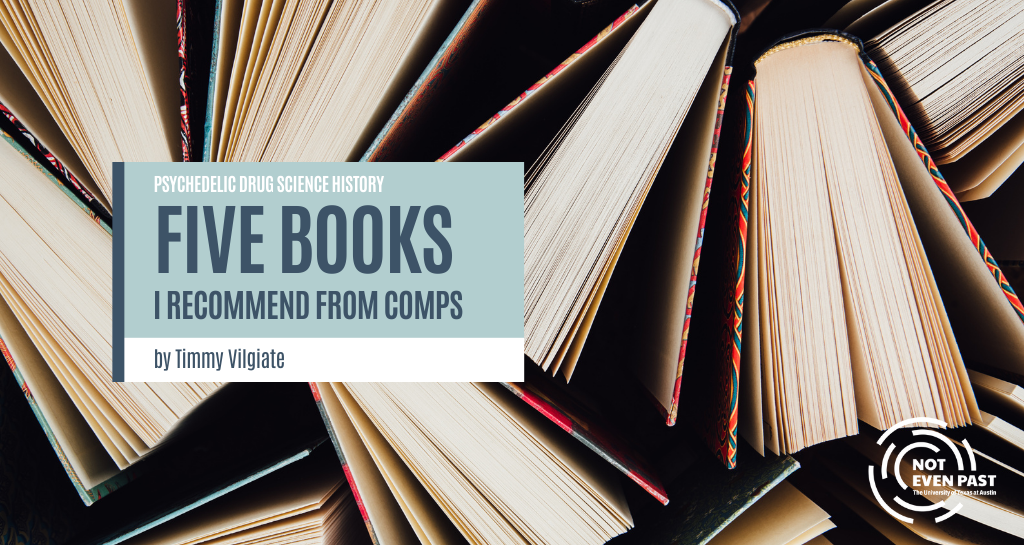
The therapeutic potentials of substances commonly known as “psychedelics”—drugs like psilocybin, lysergic acid diethylamide (LSD), and mescaline—have received increasingly favorable coverage in newspapers and TV programs around the world in recent years. Although it was by a relatively small margin, the state of Colorado decriminalized several psychedelic molecules as “natural medicines” through a 2022 ballot initiative; the 2023 conference of the Multidisciplinary Association for Psychedelic Studies in Denver featured appearances by NFL quarterback Aaron Rodgers and former Texas governor Rick Perry. In his 2018 New York Times best-seller How to Change your Mind, Author Michael Pollan describes the revival of interest in these substances as a “psychedelic renaissance”.
Those who embrace this optimistic interpretation of recent trends argue that the mainstream acceptance of psychedelics through patented, carefully regulated treatment models (“containers” in the words of Pollan) has beneficial implications for humanity as a whole. The benefits of the so-called “psychedelic renaissance”, have not been equally distributed, however. Indigenous activists at the aforementioned 2023 MAPS conference interrupted the proceedings to criticize the ways in which the processes of patenting and commodifying psychedelic medicines reinforce pre-existing power structures. Patent claims to therapies involving psilocybin, mescaline, dimethyltrypatmine, or ibogaine often build on the work of generations of Indigenous medical practitioners. In the case of lab-born substances like LSD or ketamine, companies borrow techniques and insights developed outside of institutional settings by underground therapists in the years following the global crackdown on psychedelics in the 1970s.
History plays an important role in the debates surrounding reciprocity, justice, and equity in the emerging psychedelics industry. As indicated by the success of Pollan’s book and its Netflix adaptation, a popular demand for information on the topic has grown in recent years. Unfortunately, much of the literature available on the history of psychedelics relies on a more-or-less standardized list of anecdotes and episodes, usually focused on white, US American or European men: Albert Hofmann, R. Gordon Wasson, or Timothy Leary. Stories of these figures have been told so many times that authors will often assume the reader has already heard them if they have read other books on psychedelics, and may hesitate to deviate from a standard retelling, however. A wide range of other historical actors ends up left out, providing a shallow understanding of these substances. The academic historiography of drugs also often accepts these anecdotes at face value do to their ability to provide globally oriented surveys with coverage of “halluciogens”, substances that otherwise fits uncomfortably into theoretical models used to understand stimulants and depressants. The books that I highlight in this essay expand the chronology and scope of the history of psychedelics to examine actors, episodes, and substances that have otherwise received little attention.
Glauber Loures de Assis, Clancy Cavnar, Beatriz Caiuby Labate, Ibrahim Gabriell, Erika Dyck, Patrick Farrell, eds. Women in Psychedelics: Uncovering Invisible Voices (Santa Fe: Synergetic Press, 2024).

The edited volume Women in Psychedelics, published last year, features 44 short chapters by academics and independent researchers highlighting “some of the diverse and impressive contributions women have made to our understanding of psychedelics.” Selections range from pieces focusing on the wives of well-known researchers—Rosemary Leary, Valentina Pavolvna Wasson, and Jane Osmond—to chapters examining women’s work as lab assistants, patients, and therapists. While some of the more biographical chapters take on a kind of memorializing tone, the section “The Limits of Feminism” explores some more challenging themes, such as the problem of sexual abuse within ayahuasca communities. One chapter in this section that stood out to me, written by PhD candidate Taylor Dysart from the University of Pennsylvania, argues that historians, “must go beyond merely recovery to reconstructing these histories in all their messiness and intricacy.” Dysart connects the work of anthropologist Marlene Dobkin de Rios among Indigenous and mestizo communities in Peru to discourses within the history of science surrounding the relationship between science and coloniality.
Benjamin Breen. Tripping on Utopia: Margaret Mead, the Cold War, and the Troubled Birth of Psychedelic Science (New York: Grand Central Publishing, 2024).

The 2024 book Tripping on Utopia by UT alumni Benjamin Breen also draws the historiography of psychedelics into greater conversation with themes of both gender and sexuality, by studying the work of bisexual anthropologist Margaret Mead and her third husband Gregory Bateson. Mead’s long-standing relationship with her colleague Ruth Benedict and her unpublished criticisms of hegemonic gender binaries are not reduced to background information but are shown to have played an important role in shaping her interests in altered states of consciousness and eventually psychedelics. Besides aligning with the goals of Women in Psychedelics, the book’s also makes an important intervention in the historiography by expanding the standard chronology of psychedelics beyond the 1950s and 1960s. Breen underscores the often overlooked role of interest among anthropologists in the years following World War I in trance states and shamanism among Indigenous peoples around the world, linking their interests to a wider sociopolitical context. He draws attention, for instance, to links in “the midcentury scientific imagination” between the discovery of sex hormones like estrogen and psychedelics, “due to the perception that these two categories of drugs, uniquely, had the ability to reshape one’s core identity.” This intervention into the historiography allows for a better understanding of how these substances can fit into standard models of drug history, which tend to focus on the overarching power structures and interest groups involved in drug prohibition and, alternatively, commodification.
Erika Dyck and Chris Elcock, eds. Expanding Mindscapes: A Global History of Psychedelics (Boston: MIT University Press, 2023).

The prominence of the “great men of science”-centered narratives as reference points for the history of psychedelics as a whole not only tends to exclude the roles of women and LGBTQ+ people, but also can reinforce an entrenched Americentrism within the literature. Erika Dyck of the University of Saskatchewan, one of the editors for Women in Psychedelics, along with independent researcher Chris Elcock, attempt to address this problem through the edited volume Expanding Mindscapes, which was published in 2023 by MIT University Press. Contributions highlight the history of ergot cultivation in Switzerland (used to produce LSD), the use of iboga by followers of the Bwiti religion in west Central Africa, and the popularization of ayahuasca in China. By understanding the history of psychedelic science on a more transnational scale, the book contributes a better understanding of the global power structures and inequalities involved in the present-day mainstreaming and commodification of psychedelic substances. The topics and themes explored by the various contributors have received little attention elsewhere, providing multiple promising jumping-off points for future researchers.
Joseph Patteson. Drugs, Violence, and Latin America: Global Psychotropy and Culture (New York: Springer, 2022).

Joseph Patteson’s book Drugs, Violence and Latin America: Global Psychotropy and Culture similarly approaches psychedelics within the context of global power structures. Providing a theoretical synthesis of significant value to the historiography of drugs as a whole, he understands altered states of consciousness in terms of a dialectical relationship between two modalities. He links a “xenotropic” modality of intoxication (implying the “opening of the self to the other”) to psychedelics, on the opposite end of a spectrum from drugs like cocaine, connecting such substances to what he refers to as “narcocissism”, (intensifying the perception of the self through the “radical exclusion of the other”). By building on the concepts of psychotropy, he links the cultural discourses and forms involved in the use of drugs to the politics of consciousness more broadly, highlighting in particular the xenotropic and narcocisstic potentialities of literature. The book places the depictions of drugs in Latin America—whether the peyote-inspired writings of French poet Antonin Artaud or contemporary descriptions of the War on Drugs in Latin America—into the context of transnational power structures. While the theoretical orientation of the book may be intimidating to a non-academic audience, it provides valuable insight into not only the discourses around psychedelics, but into broader issues regarding drugs and US relationships with Latin America.
Citlali Rodriguez Venegas. Mazatecos, Niños Santos y Güeros en Huautla de Jiménez (México: UNAM, 2017).

Finally, the book Mazatecos, niños santos, y güeros en Huautla de Jiménez by Citlali Rodríguez Venegas examines the history of a city in the Sierra de Flores Magón (Sierra Mazateca) in Northern Oaxaca, the place where US American amateur ethnomycologist R. Gordon Wasson was photographed participating in a “magic mushroom” velada led by the Mazatec curandera (chjóon chijne) María Sabina for Life magazine in 1955. A long list of inaccuracies have long gone unchallenged in retellings of this episode—though discussing the flood of hippies into the Sierra prompted by Wasson’s article often serves as one of the few steps outside a narrative otherwise focused on the United States. In general, a monolithic and overly simplistic understanding of the historical context of Huautla de Jiménez has often prevailed. Building off of a combination of ethnohistorical and archival research, Rodríguez Venegas destabilizes dominant understandings of Huautla as an “isolated village”, while also drawing attention to the diversity of Indigenous responses and adaptations to the arrival of outsiders in the pueblo. Notably, the book also avoids casting the “hippies” who arrived in the 1960s as a homogenous bloc of outsiders, shining light on their diverse motivations and relationships with Indigenous people. Often authors lean into a black-and-white analysis of this history, denying Indigenous agency by casting them monolithically as victims, without considering the wider historical context of Huautla de Jiménez itself. Overall, Rodríguez offers a valuable and nuanced account of a story that many of the most popular books on psychedelics largely take for granted.
Timmy Vilgiate (they/them) earned their MA at the University of Colorado Colorado Springs, and is currently in the 5th year of the PhD program in History at UT Austin. Their research looks at the relationship between assimilationist development projects and the study of psychedelic flora in the Sierra Mazateca from the late 19th Century to the mid-20th Century. Outside of history, they also enjoy playing music, sewing, and spending time with their cat Pedro.
The views and opinions expressed in this article or video are those of the individual author(s) or presenter(s) and do not necessarily reflect the policy or views of the editors at Not Even Past, the UT Department of History, the University of Texas at Austin, or the UT System Board of Regents. Not Even Past is an online public history magazine rather than a peer-reviewed academic journal. While we make efforts to ensure that factual information in articles was obtained from reliable sources, Not Even Past is not responsible for any errors or omissions.



